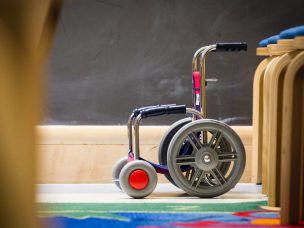Neurology
Intelligence, Language, Speech, and Motor Function in SMA Type 1
This retrospective study, published in the Journal of Neurodevelopmental Disorders, analyzed cognitive function, language comprehension, speech, and motor function in pediatric patients with spinal muscular atrophy type 1 (SMA1). The goal of the study was to develop cognitive and language benchmarks that could be used in clinical medication trials for different SMA1 subtypes. The researchers identified 22...
Measuring Neck and Trunk Muscle Strength in SMA
This study, published in Frontiers in Neurology, investigated the relationship between motor functioning and neck and trunk muscle strength in patients with spinal muscular atrophy (SMA). The researchers sought to measure the strength of neck and trunk muscles in patients with different types of SMA, compare them to values for healthy children, and assess the reliability...
The Importance of SMA Carrier Testing by OBGYNs
Spinal muscular atrophy (SMA) can result in neonatal morbidity and mortality. As a result, it is important to screen women during or before pregnancy for carrier status of SMA. This literature review, published in Obstetrical & Gynecological Survey, reviews the different types of SMA and their inheritance and guides obstetric providers in interpreting carrier screening results....
Sleep Quality and Spinal Muscular Atrophy Type 2
Patients with spinal muscular atrophy (SMA) type 2 typically begin exhibiting symptoms between 6 and 18 months old. This study, published in Sleep Medicine, analyzed both sleep architecture and the presence of sleep-disordered breathing in patients with SMA type 2. The study included data from 18 patients with SMA type 2 and 18 control patients. All...
Onasemnogene Abeparvovec Found Safe Over Six-Year Period
Onasemnogene abeparvovec is a gene replacement therapy used to treat type 1 spinal muscular atrophy (SMA). This type of SMA is characterized by onset before 6 months of age. This study, published in JAMA Neurology, studied the use of onasemnogene abeparvovec over 6.2 years following therapeutic administration. The study had two principal objectives: determine the...
The Costs of Spinal Muscular Atrophy Treatment
Spinal muscular atrophy (SMA) is divided into five types based on the age of onset and highest motor milestone achieved. To ease the burden of the disease, patients require a complex combination of multidisciplinary care. As a result, care can often be costly. This study, published in PharmacoEconomics, provides a literature review of the costs of...
Risdiplam Found to Improve Type I SMA
Type 1 SMA is a progressive neuromuscular disease characterized by onset at 6 months of age or younger. Risdiplam is a medication used to treat spinal muscular atrophy (SMA). It works by modifying SMN2 pre-messenger RNA splicing while increasing levels of functional SMN protein in the blood. This study, published in the New England Journal of...
Impact of Delayed Treatment on Kids With SMA During COVID-19
With the COVID-19 pandemic causing nusinersen treatments to be postponed, a study published in Frontiers in Neurology sought to understand the impact of delayed infusions and other supporting interventions for patients with spinal muscular atrophy (SMA) during the initial lockdown period in Italy in 2020. Researchers from the pediatric palliative care Centre of Padua (Veneto) evaluated...
The Impact of Social Determinants on NMOSD
Neuromyelitis optica spectrum disorder (NMOSD) disproportionately affects Black and Hispanic/Latino individuals. Black individuals face a higher risk of developing NMOSD and an increased associated mortality from NMOSD. Moreover, Black and Hispanic/Latino individuals face greater disease severity and faster disease progression than white individuals. Researchers at the Keck School of Medicine at the University of Southern...
More Medical News














